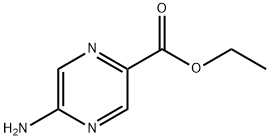In a biochemistry class, students are discussing the properties of ions and their roles in biological processes. One student asks whether OH⁻ is acidic or basic.
Derived Questions:
1.What is the pH range of solutions where OH⁻ ions dominate?
2.How does the presence of OH⁻ ions affect the solubility of compounds in water?
Is OH- acidic or basic?
Related Products More >
-
- 108-80-5
- USD 50.0000
- 50kg
-
- 108-78-1
- USD 4.5000
- 25kg
-
- 4559-86-8
- USD 750.0000
- 170kg
-
- 77182-82-2
- equest For Quotation
-
- 70131-50-9
- equest For Quotation



 沪ICP备2021018848号-5
沪ICP备2021018848号-5

Reason:
OH⁻, or hydroxide, is a negatively charged ion that carries a single unit of negative charge. In aqueous solutions, OH⁻ ions act as bases, accepting protons (H⁺ ions) to form water (H₂O). This is because bases are defined as substances that increase the concentration of OH⁻ ions in solution, thereby lowering the hydrogen ion concentration (H⁺) and raising the pH. Since OH⁻ directly contributes to the basicity of a solution, it is classified as a basic ion.
Derived Questions Answers:
1.What is the pH range of solutions where OH⁻ ions dominate?
Solutions where OH⁻ ions dominate are typically basic or alkaline, with a pH greater than 7. The pH scale measures the hydrogen ion concentration in solution, with a pH of 7 being neutral. As OH⁻ ions increase in concentration, the hydrogen ion concentration decreases, resulting in a higher pH value. Solutions with a pH above 12 are considered strongly alkaline, with OH⁻ ions being the predominant species.
2.How does the presence of OH⁻ ions affect the solubility of compounds in water?
The presence of OH⁻ ions can affect the solubility of compounds in water, particularly those that are acidic or amphoteric (able to act as both acids and bases). Acidic compounds, such as organic acids or certain minerals, tend to dissolve more readily in basic solutions because they react with OH⁻ ions to form water and corresponding anionic species. Similarly, amphoteric compounds, such as aluminum hydroxide, can undergo changes in solubility depending on the pH of the solution. In acidic solutions, they may dissolve to form cationic species, while in basic solutions, they may dissolve to form anionic species or remain insoluble.
Usage and Application Notes:
Understanding the basicity of OH⁻ ions is essential in various fields, including chemistry, biology, and environmental science. In chemistry, OH⁻ ions play a crucial role in acid-base reactions and pH regulation. In biology, they are involved in processes such as cellular respiration and photosynthesis, where they contribute to the maintenance of pH homeostasis. In environmental science, OH⁻ ions are important in natural water purification processes, such as the precipitation of heavy metals and the degradation of organic pollutants. When working with OH⁻ ions or basic solutions, it is important to take proper safety precautions, such as wearing protective clothing and ensuring adequate ventilation, to avoid skin and eye irritation or other potential hazards.
According to the Arrhenius theory: An Arrhenius base is a substance that, when dissolved in water, increases the concentration of hydroxide ions (\(OH^-\)). OH⁻ itself, when present in water, directly contributes to an increase in the hydroxide ion concentration, thus making the solution basic.
According to the Bronsted-Lowry theory: A Bronsted-Lowry base is a proton acceptor. OH⁻ has a strong tendency to accept a proton (\(H^+\)) to form water (\(H_2O\)). In an aqueous solution, it can react with \(H^+\) ions, reducing their concentration and increasing the relative basicity of the solution. The higher the concentration of OH⁻ ions relative to \(H^+\) ions, the more basic the solution is.